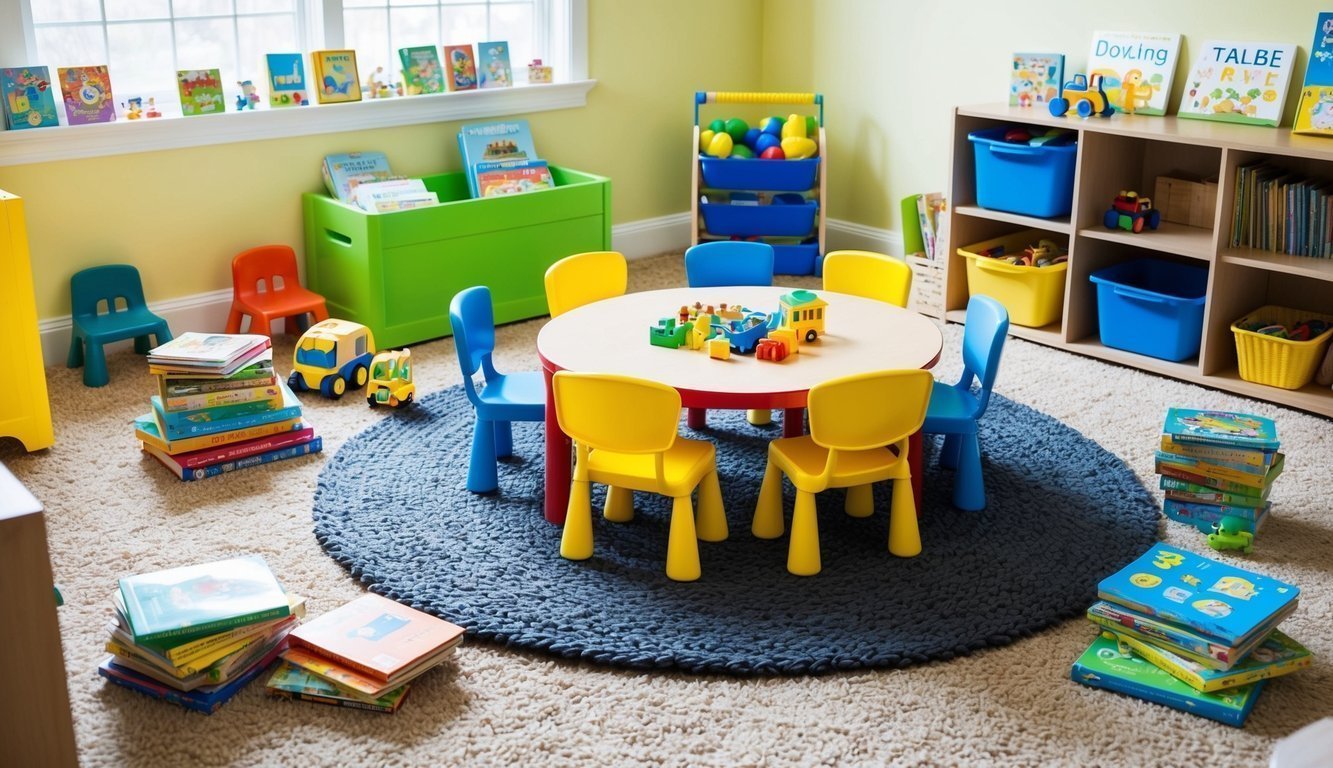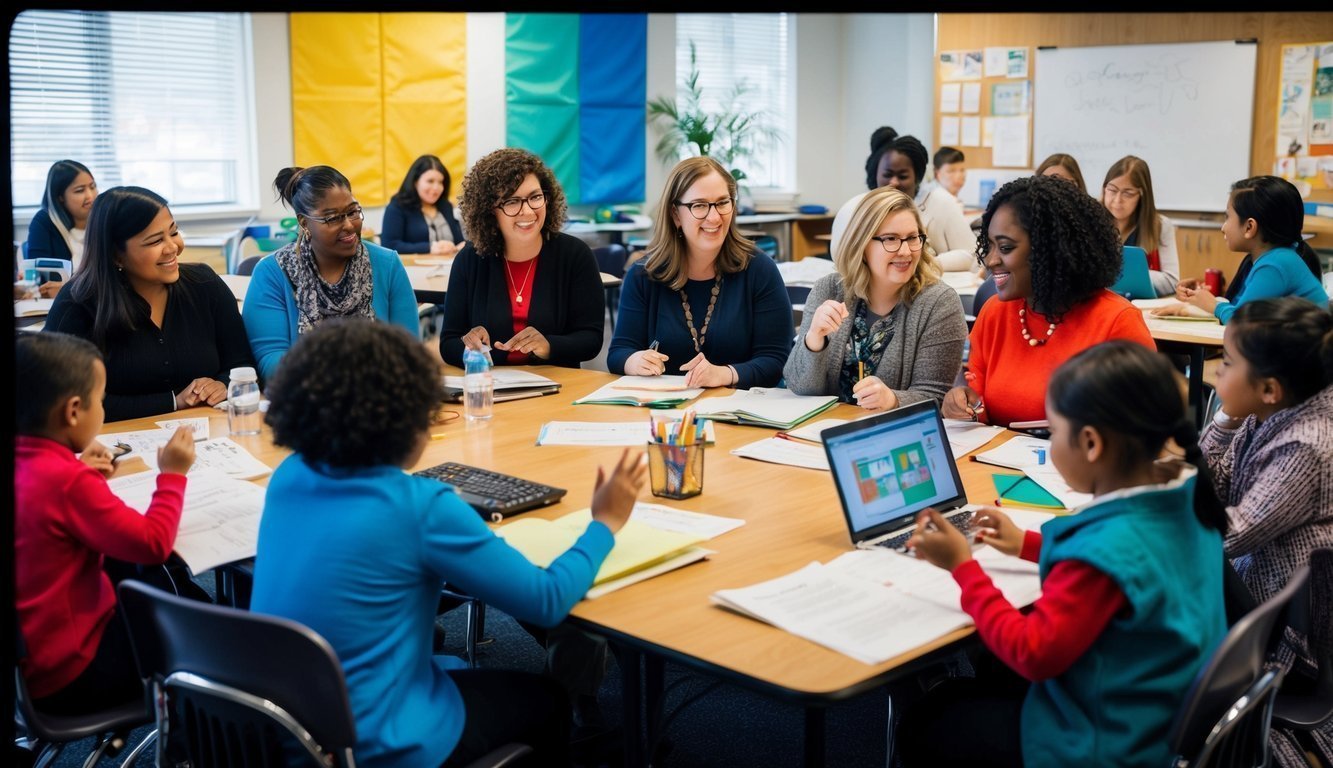PsychNewsDaily Publishers
100 Summit Drive
Burlington, MA, 01803
Telephone: (320) 349-2484
PsychNewsDaily Publishers
100 Summit Drive
Burlington, MA, 01803
Telephone: (320) 349-2484
Early childhood development establishes critical neural pathways, influenced by both biological factors and environment, shaping cognitive, emotional, and social growth for lifelong learning.

Early childhood development lays the groundwork for essential neural pathways that influence lifelong learning and behavior. The relationship between biological factors and environmental influences during this stage has significant repercussions for a child’s future.
During the first few years of life, the human brain experiences rapid growth. Neuroscience shows that by age three, a child’s brain has created roughly 1,000 trillion synapses – twice the number found in an adult brain. These neural links are reinforced by repeated experiences and usage.
While genes offer the basic framework for brain structure, it is experiences that shape the connections within it. Positive interactions with caregivers enhance neural development and support healthy growth. In contrast, neglect or exposure to toxic stress can hinder brain development.
Brain plasticity is at its peak during early childhood. This feature allows for quick learning but also increases susceptibility to adverse influences. As children mature, unused neural pathways are eliminated, highlighting the importance of early intervention for addressing developmental issues.
A child’s environment significantly influences their cognitive, emotional, and social development. Supportive relationships offer a foundation for resilience and learning. Attentive caregiving aids in the establishment of secure attachments and emotional regulation skills.
Negative childhood experiences can have enduring effects on brain structure and function. Prolonged stress or trauma may heighten the brain’s fear response, potentially impairing attention, decision-making, and impulse control in later life.
Stimulating, enriching environments are crucial for healthy development. Exposure to language, music, and play enriches cognitive capabilities. Additionally, stable housing and adequate nutrition are essential for healthy growth.
Early intervention strategies can lessen the effects of negative experiences. Programs designed to support families and encourage positive parenting help cultivate protective factors for children’s well-being.

Early childhood education involves intricate interactions among curriculum, teaching methodologies, and child development. These components shape the educational experiences and outcomes of young children in various learning environments.
Curricula for early childhood education emphasize fostering comprehensive development. The cognitive, social, emotional, and physical growth areas are integrated through playful learning experiences. Typical educational objectives include:
• Language and literacy advancement
• Numeracy and problem-solving abilities
• Social-emotional competence
• Physical coordination and well-being
Developmentally appropriate practices ensure that activities align with the children’s abilities and interests, recognizing the uniqueness of each child’s learning style and pace.
Curriculum planning often blends structured and unstructured play. Guided exploration enables children to construct knowledge through practical experiences. Teachers facilitate learning by providing materials, posing questions, and encouraging reflection.
Effective early education approaches accommodate the needs of diverse learners, including those with disabilities, various linguistic backgrounds, and distinct social identities.
Inclusive practices include:
• Universal Design for Learning (UDL)
• Differentiated instruction
• Culturally responsive teaching
Teachers apply scaffolding techniques to assist individual learning, offering temporary support as children grow and acquire new skills.
Opportunities for collaborative learning foster social interaction and skill development. Group work and partner activities promote communication and cooperation.
When used appropriately, technology can enhance learning experiences. Interactive digital tools support exploration and practice of concepts.
Ongoing assessment is essential in early education environments. Observation and documentation of children’s progress guide instructional choices.
Assessment methods include:
• Anecdotal records
• Learning portfolios
• Developmental checklists
Responsive caregiving involves adjusting teaching methods based on assessment outcomes. This adaptable approach guarantees that children receive suitable supports and challenges.
Feedback to children emphasizes effort and specific improvements, utilizing positive reinforcement to promote perseverance and build self-confidence.
Communication between parents and teachers is crucial for ensuring aligned learning environments at both home and school. Regular updates and discussions foster collaborative goal setting for each child.

Effective strategies for improving early learning concentrate on play-based methodologies, the development of executive functions, and capitalizing on social interactions. These techniques encourage cognitive development and equip children with essential skills for lifelong learning.
Play-based learning is fundamental to early childhood education, merging enjoyable experiences with cognitive growth, allowing children to explore, experiment, and learn organically. Guided play involves adults subtly orchestrating activities to meet specific learning goals.
Self-directed play and free play promote creativity and problem-solving skills, enabling children to cultivate social competence and language abilities through imaginative play and peer interactions.
Cognitive learning strategies in early childhood aim to build essential knowledge and skills by facilitating activities that improve memory, attention, and reasoning capabilities. Games, puzzles, and interactive stories are effective ways to engage young learners.
Executive functions are vital cognitive abilities that aid children in managing their thoughts, actions, and emotions. This includes working memory, cognitive flexibility, and inhibitory control.
Activities promoting executive functioning often involve adhering to multi-step directions, shifting between tasks, and practicing delayed gratification. Games like “Simon Says” and “Red Light, Green Light” serve as effective tools.
Self-regulation skills empower children to control their actions and emotions. Mindfulness practices, breathing techniques, and games focusing on emotion identification can significantly aid in developing these important competencies.
Social interactions are crucial for early learning. The “serve and return” principle emphasizes responsive exchanges between children and caregivers, nurturing language skills and emotional connections.
Collaborative activities enhance social abilities and provide opportunities for peer learning. Group projects, dramatic play, and shared storytelling encourage cooperation and effective communication.
Educators can create environments that foster positive social interactions by establishing cooperative play areas, leading group discussions, and modeling appropriate social behaviors.

Early childhood educators are pivotal in shaping young minds and supporting optimal development. Their professional practices greatly influence children’s learning outcomes and overall well-being.
Educators in early childhood settings must be attuned to the unique needs and developmental stages of each child. They adjust their teaching methodologies to fit the individual learning preferences of their students. Educators facilitate social interaction, motivating children to collaborate and learn from each other.
The National Association for the Education of Young Children (NAEYC) underscores the significance of responsive teaching. Educators observe children closely, interpreting their behaviors and interests to guide curriculum design. They provide scaffolding to help children develop new skills and concepts.
Successful educators balance structured activities with child-initiated exploration. They pose open-ended questions that encourage critical thinking and problem-solving. By demonstrating curiosity and enthusiasm for learning, they inspire children to become lifelong learners.
Educators in early childhood settings design environments that foster safety, engagement, and inclusivity. They organize spaces to facilitate both individual and group activities, ensuring resources are accessible and suitable for developmental stages.
Learning environments should reflect diversity and cultural awareness. Educators incorporate books, toys, and images that represent various cultures and backgrounds, allowing children to share their unique experiences and perspectives.
Supportive surroundings nurture emotional security and positive relationships. Educators establish clear routines and expectations, providing consistency and predictability. They also utilize positive guidance techniques to promote the development of self-regulation skills.
Collaboration with families is essential for creating cohesion between home and school environments. Educators maintain open lines of communication and actively involve parents in their children’s educational journeys, enhancing children’s sense of belonging and supporting their overall growth.